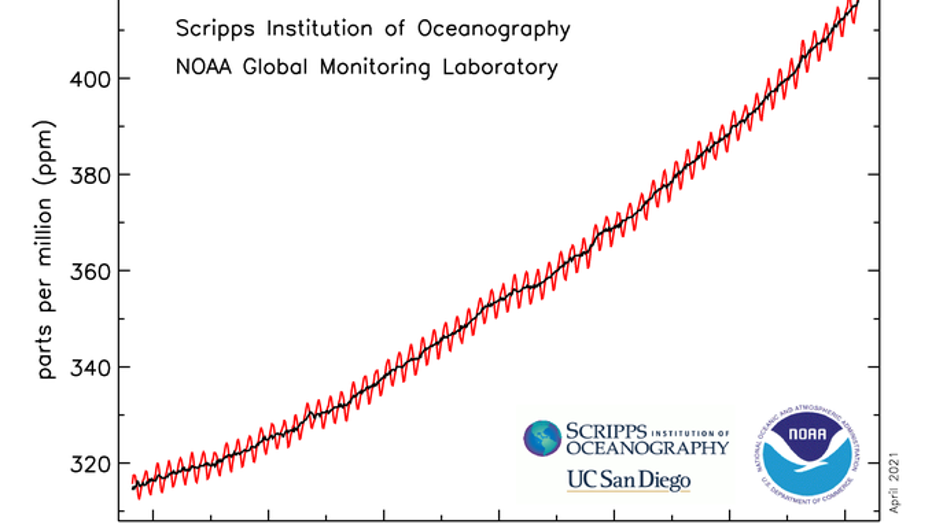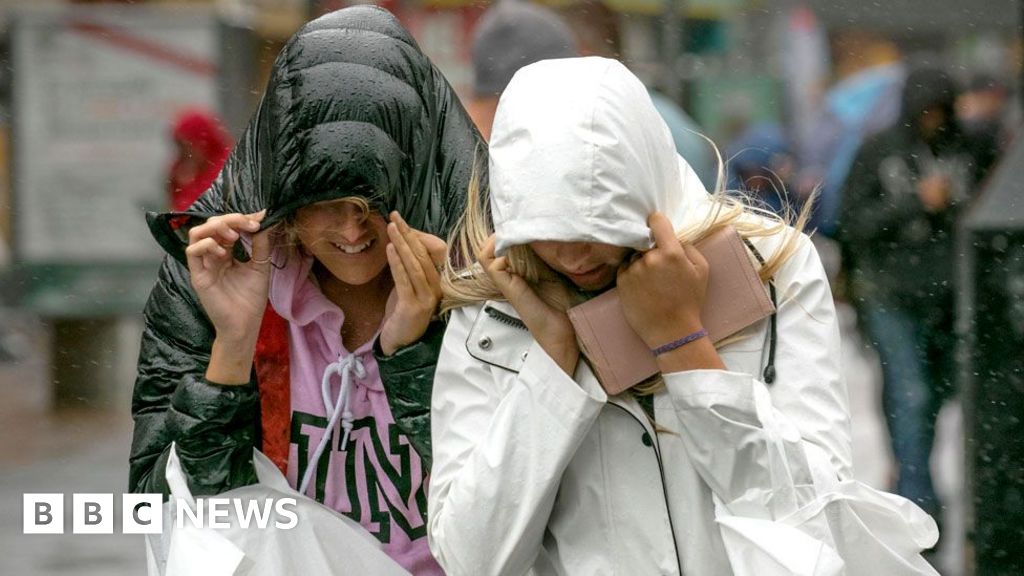Published June 14, 2025 6:32am CDT
 article
article
MILWAUKEE - An incredibly complex area of science with no simple answers, climate change is one of the most significant and most hotly debated topics in science. A groundbreaking new study published in the journal "Nature" adds to the complexity by upending long-held beliefs about carbon emissions from our rivers and streams.
Ancient carbon discovery
The backstory:
Until this study, scientists typically thought most carbon dioxide – CO₂ – released from rivers originated from carbon that had been absorbed from the atmosphere since around 1955. That date is important because it marks the year when nuclear weapons testing sharply increased atmospheric radiocarbon, making it easier to distinguish newer carbon from older sources through radiocarbon dating.

The graphs show atmospheric carbon dioxide measured at Mauna Loa Observatory, Hawaii. (NOAA)
The study revealed that, in fact, nearly 60% of that CO₂ actually comes from ancient carbon. Some of that carbon could be thousands of years old.
By the numbers:
Rivers and streams emit nearly 2 billion tons of CO₂ into the atmosphere annually. Only 41% of that CO₂ comes from after 1955, and the remaining 59% originates from ancient sources.
The study analyzed nearly 1,200 river samples globally. Large rivers and those in arid, mountainous or carbonate-rich landscapes emit the most ancient carbon.
FREE DOWNLOAD: Get breaking news alerts in the FOX LOCAL Mobile app for iOS or Android
‘Carbon budget’
Why you should care:
Carbon emissions, both human-induced and natural, are the main cause of climate change. The presence of this ancient carbon suggests our landscapes store more human-emitted CO₂ than previously estimated.
Climate change itself, along with erosion and land-use changes, could accelerate the release of this ancient carbon, which could then amplify the warming of our atmosphere.
The study shifts how we understand what is known as the "carbon budget," or the balance of carbon sources that are critical to climate modeling.

FILE - NOAA's GOES-East satellite captured this stunning view of the Americas on Earth Day, April 22, 2014. (NASA/NOAA/GOES Project)
The Good News:
More carbon may be stored in land than we thought.
Because only 41% of the carbon dioxide released from rivers and streams into the atmosphere comes from modern carbon, the study suggests that land-based ecosystems are holding onto more human-emitted carbon than previously believed. That means forests, soils and underground reservoirs may be buffering some of the impact of climate change better than climate models have indicated.
While the massive amounts of older carbon are a concern, it is leaking out far more slowly, which could give scientists and policymakers more time to implement mitigation strategies. It’s a reminder that the Earth’s systems are very complex and potentially more resilient than some have thought.
Future research
What's next:
Pinpointing the precise age of river- and stream-based CO₂ remains difficult due to seasonal and geographic variability in water flow.
Future studies need to conduct high-resolution measurements to track carbon age across time and locations, and researchers need to further examine how climate-driven changes – like droughts, heavy rain and flooding – can affect carbon release patterns.
SIGN UP TODAY: Get daily headlines, breaking news emails from FOX6 News
There's also a pressing need to assess whether ancient carbon is being released at a faster pace in response to human activity and environmental change.
The "Nature" study helps us respect our planet for its resilience but also reminds us of our need to treat our home with respect.
The Source: Information in this report is from the FOX6 Weather Experts and: Dean, J. F., et al. (2025). Nature, 642, 105–111.
EnvironmentWeatherNewsScience








 English (US) ·
English (US) ·